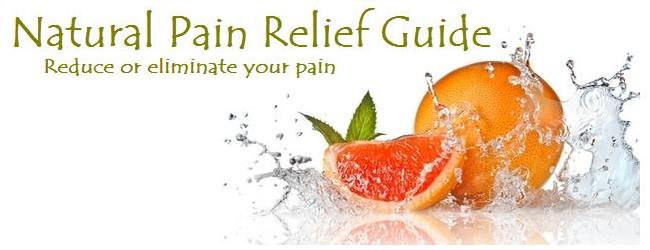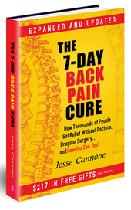 |
||||||||||||||||||
Lactic acid fermentation has many health benefits (see list of
lactic acid bacteria benefits)
and is a way to preserve raw food, complete with its enzymes, for use in future months. A well-known example is sauerkraut (see
how to make sauerkraut)
but there are also many other ferments.
Will Boost Your Health |
||||||||||||||||||
| apple cider | beer |
| bread, sourdough | buttermilk |
| cheese | kefir |
| kimchi | kombucha |
| miso | sauerkraut |
| silage | tempeh |
| wine | yogurt |
What is lactic acid fermentation?
Lactic acid fermentation is a process in which lactic acid (C3H6O3) is formed as a product of energy exchange which takes place during the metabolism of certain microorganisms. Most all vegetables and fruits provide their own lactic acid-producing bacteria.
Lactic acid acts as a food preservative. Lactic acid fermented foods have been used for centuries in the diets of the Balkans, Germans, Greeks, Indians, Japanese and Russians. Instructions for making lactic acid ferments were written by the Roman scholar Pliny as early as 50AD.
Vegetables that have been through the lactic acid fermentation process, sometimes called simply ferments (also raw cultured vegetables) are unheated, cultured (referring to the fermentation process) vegetables that have been shredded or cut in small pieces and mixed in a solution of salt brine. When left in a sanitary container for 1-3 weeks at about 15º to 18º degrees C and in the dark, the lactobacilli proliferate. These friendly bacteria are naturally present in vegetables and also in our digestive tract. They break down sugars and starches found in the vegetables and aid the pancreas and intestines in proper digestion. The difference between raw cultured vegetables and something like commercially-available, heated sauerkraut is that in a commercial sauerkraut the lactobacilli and healthful enzymes, have been destroyed.
In raw cultured vegetables, the fermentation process breaks down the cells of the vegetables making them more digestible, similarly to cooking. However, since the vegetables are unheated, they can still supply a healthful balance of enzymes and micro-organisms.
Some related terminology:
Dysbiosis: When the bad bacteria and yeast become overgrown in your intestinal tract, you have a condition called dysbiosis. Dysbiosis has been linked with disorders like yeast infections, irritable bowel syndrome and rheumatoid arthritis. A common cause of dysbiosis is antibiotic therapy. The antibiotics that you take for killing an infection will also kill the healthy bacteria in your digestive tract and these need to be replenished.
Prebiotics are non-digestible foods that make their way through our digestive system and help good bacteria grow and flourish. Prebiotics keep beneficial bacteria healthy. An example of a prebiotic is the compound inulin which is found in Jerusalem artichokes, chicory root, raw oats and unrefined wheat.
Probiotics means "for life". These friendly bacteria produce vitamin K and many B vitamins including B12. Some common probiotics are Bifidobacterium bifidum, Bifidobacterium longum, Lactobacillus acidophilus and Lactobacillus plantarum.
Synbiotics refer to a combination of probiotics and prebiotics. An example would be Lactobacillus and inulin.
The body can tell the difference between healthy and unhealthy bacteria. Inside the intestine, the unhealthy or pathogenic bacteria create an immune reaction leading to diarrhea, cramps and abdominal pain. Clostridium difficile is one of those pathogenic bacteria and is a complication of prolonged or repetitive antibiotic use. Giardia is a parasitic infection that leads to chronic diarrhea. Either of these and other pathogens can be crowded out by probiotic bacteria.
Other notes: There are more bacteria in your gut than there are cells in your body.
Harmful bacteria ingested with food are normally killed by stomach acid. If the acid is not strong enough, the bacteria survive and ferment (sour) the food causing indigestion.
Dr. Louis Pasteur declared sauerkraut to be the healthiest of vegetables.
Lactobacillus is one of a number of bacteria that can produce acid in the mouth contributing to tooth decay.
Normal gut flora can be thrown out of balance by the use of antibiotics or other drugs, alcohol use, stress, various diseases, exposure to toxins and even the use of antibacterial soap.
Because lactic acid bacteria convert lactose into lactic acid, their use may help people who are lactose intolerant to better tolerate lactose (milk sugar).
|
Keep up to date with valuable insights into pain management via a healthy lifestyle. Receive the monthly Natural Pain Relief Guide Newsletter. News articles, health tips, specials, freebies. Enter your email and name in the form to the right. |
Relieve your pain - approved medical device increases circulation and healing.
The contents of this site are intended for educational and information purposes only.
You have a right (and a responsibility) to educate yourself regarding health matters.
The information presented here is not meant to diagnose, prevent, mitigate, treat, or
cure any disease. If you have health concerns, consult a nutritionally-oriented health
professional and take responsibility to become educated in caring for your own health.







New! Comments
Have your say about what you just read! Leave me a comment in the box below.